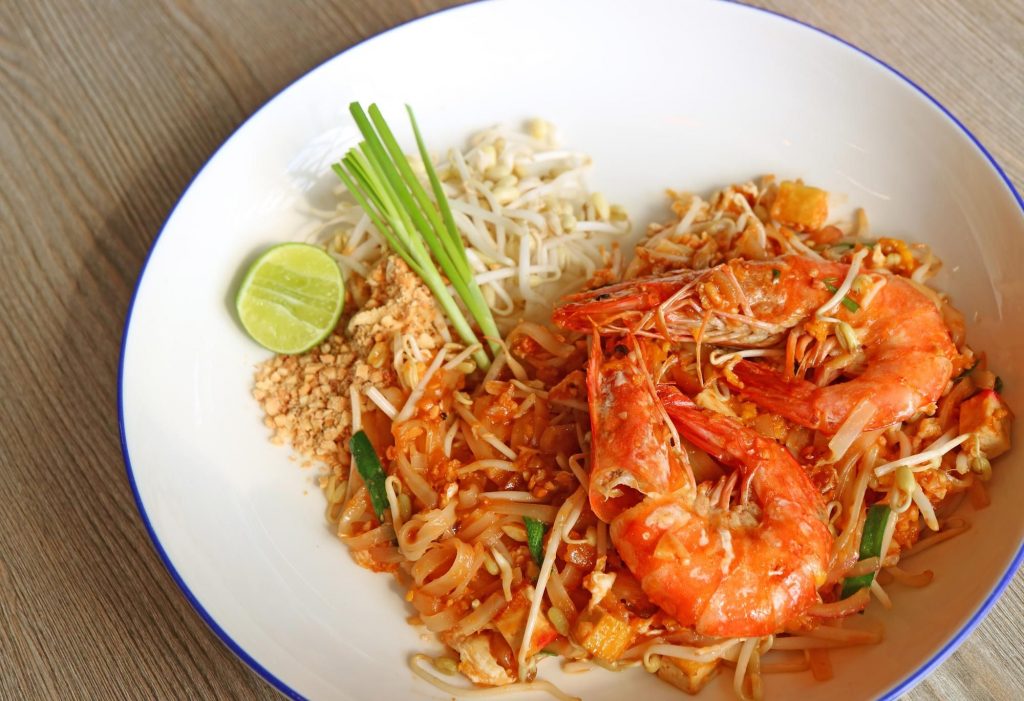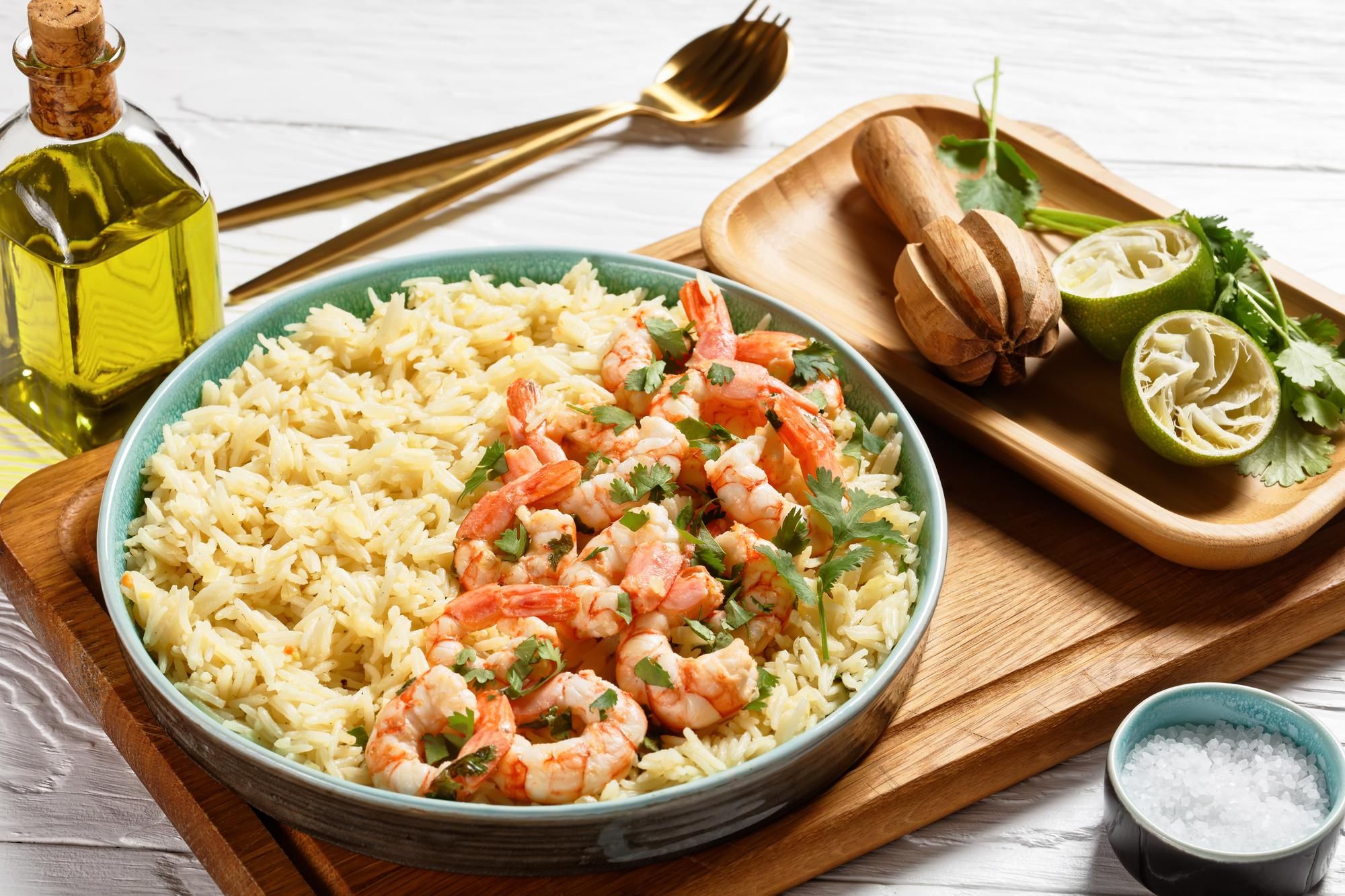Easy Recipe for Fried Rice
The best way to make use of your leftover rice is to make fried rice. Numerous variations exist for fried rice. In China, it’s often prepared with sparse quantities of meat and aromatics, salt, and sometimes a little soy sauce or another sauce. Larger pork pieces and a lot more sauce are used when making it in the Chinese-American manner. For the time being, I’m interested in the Chinese style of fried rice preparation because it is what I primarily ate growing up.
Fried rice is pretty easy to make but there are some rules to follow if you want to make the perfect fried rice. I will be walking you through these rules.
Rule #1: Use the right type of rice
The key to the ideal fried rice is texture. I wanted rice with distinct grains, each with a soft taste and a little crunchy fried outside. I desired grains that were distinct from one another so that you could taste and enjoy their textures, while still being sticky enough to let you pick up little clumps with a spoon or a set of chopsticks. I made different batches of fried rice using Chinese-style medium-grain rice, short-grain sushi rice, and Jasmine rice. I also tried using long-grain variations (basmati and Riceland extra-long-grain rice) and also parboiled rice (Arroz parboiled rice).
The medium-grain rice had the ideal combination of stickiness (for ease of chewing) and distinct grains (for superior texture).
The short-grain rice is typically stickier than medium-grain rice. It was a bit challenging stir-frying without it sticking together, but the finished product had a perfect chewy texture.
Long-grain rice varieties proved to be the most challenging since they were less plump and came apart slightly when stir-frying, which is what gives fried rice its distinctive chewy-tender feel.
Rule #2 If you can, plan ahead
There is this theory I always hear about “if you want to make the perfect fried rice, use rice prepared a day before. You’d get a mushy dish if you use fresh rice”. Could this be true? If it is true, then why?
Two things happen to cooked rice as it sits: first, it gets drier then secondly the rice firms up and becomes less sticky because the gelatinized starches that have swelled and softened during the cooking process become recrystallized.
Knowing this do I go for dry or stale rice? I put up batches of rice under a table fan at room temperature to test for dryness in the hopes that it would dry out quickly and prevent it from going bad. I kept batches of rice in the refrigerator firmly covered on plates for periods ranging from 30 minutes to 12 hours to test for staleness. This allowed the starches to recrystallize without drying out. I also kept rice in poorly sealed takeaway containers. These batches would most likely get dry and stale over time. From my test I came to the following conclusions:
- Rice that has been cooked, spread out onto a tray, and then put under a fan for approximately an hour turns out dry but not stale, which is precisely what you want.
- You can create superb fried rice with fresh rice as long as you spread it out on a dish or tray while it’s still hot and give it a few minutes to let some surface moisture drain.
- Before stir-frying, break up any clumps of day-old rice by hand. Furthermore, because it is internally drier than fresh rice, you must stir-fry it quickly to prevent it from overcooking. However, if you happen to have leftover rice from the previous day, it will make a bowl of fantastic fried rice.

Rule #3: Rinse the rice properly
Because rice clumps as a result of too much starch, it is important to properly wash the uncooked rice with cold water. No one likes their fried rice clumpy.
Rule #4 Break up the rice
Before adding the rice to the pan, separate any rice that has begun to clump or get stale. By doing this, you can be certain that the rice will separate into individual grains without breaking or becoming crushed.
Rule #5 Use a wok
Even while woks were not intended to be used on gas ranges with rings of burners in the Western manner, they are still far better containers for stir-frying than a skillet or saucepan. A wok not only offers several heat zones (enabling you to move ingredients away from the centre when adding fresh ones), but it also makes tossing and turning simple. This is crucial to do to get “wok hei”, the smokey taste that results from the oil vaporising and burning when the rice is tossed in the air.
Rule #6 Keep the pan hot
I’ve never gotten the skillet hot enough or cooked too much rice at once, which are my two worst faults when making fried rice.
When making fried rice, the process is very similar to that of, say, searing beef chunks for a beef stew: you want to make sure that the pan is extremely hot before adding the rice so that the exterior can brown and develop some texture before the rice releases too much internal moisture and ends up steaming rather than frying.
Rule #7 Be minimal with the addition of extra ingredients
You are making a dish of fried rice. Just as the name implies, the spotlight should be on the rice and not the sauce. All of the add-ins should be taste enhancers rather than the main attraction.
Rule #8 Apply the sauce sparingly
Some fried rice recipes call for huge quantities of soy sauce, oyster sauce, or hoisin sauce. I’ve never really understood this. Why take the time to make sure your rice grains are dry and distinct if you’re just going to go back and cover them all with more sauce?
You don’t need a lot of sauce if you’re utilizing decent technique and premium rice.
Rule #9 Use fresh “greens”
You can’t say you’ve made a dish of fried rice if you don’t toss in green elements before serving it. This can be anything from cilantro, basil, mint, green peas or even carrots.
Rule #10 Stir well
The final step involves giving everything a good stir. By the end every gain should stand as a single entity and each spoonful should have an equitable distribution of all of the mix-ins.

Ingredients
- 2 cups cooked white rice
- 30ml vegetable oil
- 1 medium-sized carrot, peeled and diced
- 1 small onion
- 2 scallions, thinly sliced
- 5g minced garlic
- 5ml soy sauce
- 5ml toasted sesame oil
- 1 large egg
- 115g green peas
- Kosher salt and white pepper powder
Directions
- If using day-old rice (see note), put it in a medium bowl and break it up into individual grains with your hands before continuing. In a wok, heat 7mL of vegetable oil until smoking. Cook, turning and tossing occasionally, until the rice is pale golden and toasted, with a faintly chewy texture, about 3 minutes. Place in a medium mixing basin. Repeat with the remaining rice and the remaining 7mL of vegetable oil.
- Return all of the rice to the wok, pressing it up the edges but leaving a space in the centre. Fill the space with 7mL oil. Cook, stirring gently, until the onion, carrot, scallions, and garlic are softened and fragrant this takes about a minute. Combine with rice. Toss in soy sauce and sesame oil to coat. Season with salt and pepper to taste.
- Push the rice to the side of the wok and drizzle in the remaining 7ml oil. Season the egg with salt and pepper and place it in the oil. Scramble the egg, breaking it up into little pieces using a spatula. Toss the egg with the rice.
- Add green peas and toss until every grain of rice is separated. Immediately serve











